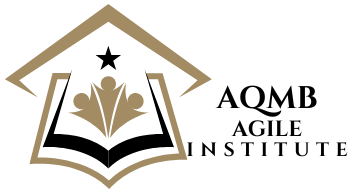There’s an effective way to enhance your productivity and success by establishing a well-structured business routine. By creating a consistent framework, you can maximize your efficiency and minimize the chaos that often comes with running a business. This guide will walk you through key steps to build a routine tailored to your goals, empowering you to stay focused and achieve optimal performance. Embrace the benefits of a solid routine and watch as your business flourishes through improved organization and time management.
Key Takeaways:
- Establish a consistent schedule for daily tasks to enhance productivity and focus.
- Set clear goals and objectives to guide your daily activities and measure progress.
- Incorporate breaks and downtime to maintain energy and prevent burnout.
- Evaluate and adjust your routine regularly to improve efficiency and adaptability.
- Utilize tools and technology to streamline processes and keep track of your tasks.
The Strategic Importance of a Business Routine
Boosting Productivity and Efficiency
Establishing a reliable business routine serves as a framework that significantly enhances your productivity levels. By allocating specific tasks to certain times of the day, you’re less likely to experience decision fatigue, allowing your mind to focus on what really matters. Research shows that individuals with structured routines can increase their output by nearly 25%, as evidenced by various studies in workplace psychology. For example, a study conducted by the University of California revealed that employees reporting a consistent daily routine felt more accomplished and less stressed, enabling them to tackle challenging projects with greater efficacy.
Utilizing tools like time-blocking can elevate your daily operations even further. By segmenting your day into manageable chunks dedicated to specific tasks, you encourage a rhythm that reinforces behavior and promotes a disciplined approach to work. This practice not only helps in prioritizing tasks based on importance but also aids in minimizing distractions, leading to a smoother workflow. Employees who implement such techniques report extended periods of flow, which directly correlates with overall job satisfaction and increased quality of output.
Enhancing Time Management and Focus
A well-structured routine acts as your personal roadmap, guiding you through your daily responsibilities while helping you maintain a laser-like focus. By planning your tasks in advance, you’re not just saving time; you’re optimizing your cognitive resources. The brain is wired to perform best when it is not overwhelmed with choices. Hence, when you outline your priorities and commitments, you mitigate the mental clutter that often leads to procrastination. For instance, allocating the first hour of your day for strategic planning can create a ripple effect, allowing you to address urgent tasks efficiently later on.
Moreover, a defined routine can dramatically improve your ability to manage time effectively. With clear boundaries for each task, you cultivate a habit of adhering to set times. This practice not only reduces the temptation to drift off into distractions but also enables you to execute your workload more promptly. Studies indicate that people who follow a structured routine are capable of transitioning between tasks up to 40% faster than those without one, effectively reclaiming precious hours in their workday.
By streamlining your daily tasks into a cohesive routine, you ensure that your focus sharpens on each activity at hand. Utilizing techniques such as the Pomodoro Technique—where work is split into 25-minute focused intervals followed by short breaks—can further solidify your ability to concentrate. The more effectively you manage your time, the more control you will exert over your personal and professional life, promoting growth and success in your business endeavors.
Analyzing Your Current Workflow
Identifying Time Wasters and Distractions
Begin by conducting an honest audit of your daily activities to identify where time is lost. Look for patterns in your work, such as frequent interruptions from emails, social media, or chat notifications that pull you away from tasks. Use productivity tracking tools like RescueTime or Toggle, which can provide insights into how much time you spend on particular applications or websites. By pinpointing these time-wasting habits, you can develop strategies to minimize their impact. Establish specific times for checking emails or social media to create more focused work periods.
Beyond digital distractions, consider physical interruptions as well. Do you often get sidetracked by chatty coworkers or unnecessary meetings? If so, establishing a “do not disturb” signal during your most productive hours can help. By systematically addressing these distractions, you can reclaim valuable time and direct your focus toward your core business goals.
Evaluating Strengths and Weaknesses
Assessing your strengths and weaknesses in your workflow is vital for optimizing routines. Consider performing a SWOT analysis (Strengths, Weaknesses, Opportunities, Threats) specific to your business operations. This structured method allows you to objectively identify what you excel at, such as effective project management or exceptional interpersonal skills, while also highlighting areas for improvement, such as time management or delegation. Concrete examples include analyzing the success rates of your projects and determining which aspects aligned most closely with your strengths.
Additionally, seek feedback from team members to gain an outside perspective on your operational effectiveness. Create an environment where constructive criticism is welcomed, as this insight can illuminate gaps in your workflow that you may not have recognized. Through honest evaluation, you can focus on enhancing your strengths while developing systems or training to address weaker areas, leading to improved performance overall.
Enhancing your strengths can mean streamlining processes that you naturally excel in, such as quick decision-making or creative problem-solving. Conversely, if you are aware that your weaknesses include time management, consider time-blocking techniques or productivity software that breaks tasks into manageable parts. Fostering a balanced routine allows you to leverage your strengths while addressing shortcomings, ultimately driving business success.
Designing a Personalized Routine
Setting Clear Goals and Priorities
Your routine should reflect the specific goals and priorities that drive your business forward. Begin by defining your short-term and long-term objectives, whether that’s increasing sales by a specific percentage or developing a new product line. Document these goals and break them down into actionable steps. For instance, if you aim to boost your social media presence, detail a plan that includes daily content creation, engagement with followers, and analytics review on a weekly basis.
Consider utilizing the SMART criteria—Specific, Measurable, Achievable, Relevant, and Time-bound—to ensure your goals are clearly defined. Setting priorities is equally vital; using techniques like the Eisenhower Matrix can help you distinguish between tasks that are urgent and important versus those that are simply distractions. This strategic approach will pave the way for a routine that aligns closely with your objectives, keeping you focused on what truly matters.
Choosing Effective Time Blocks and Breaks
Effective time management lies at the heart of any business routine. Allocate specific time blocks for various tasks, whether they’re devoted to deep work like project development or lighter activities like email correspondence. Aim for productivity bursts of around 25-30 minutes, followed by 5-10 minute breaks, a technique known as the Pomodoro Technique. This cycle fosters concentrated work, helping to minimize burnout while maximizing output.
Integrate longer breaks into your routine as well, typically lasting 30-60 minutes after every 2-3 hours of focused work. Use these breaks to step away from your workspace, refresh your mind, and recharge your energy levels. Engaging in physical activity during breaks, such as walking or stretching, can also improve circulation and cognitive function, ultimately enhancing your overall productivity.
Experiment with different lengths and timing of your blocks and breaks to identify what resonates best with your working style. Everyone’s rhythm varies, so by testing various configurations—like working in longer or shorter intervals—you’ll discover a cadence that both motivates you and maintains high levels of focus throughout your day.
Implementing and Adjusting Your Routine
Consistency in your business routine is necessary for realizing the potential benefits of your structured approach. One strategy for maintaining this consistency is to identify specific times in your day dedicated to particular tasks. For instance, if you schedule your marketing efforts for Monday mornings and client meetings for Wednesday afternoons, you create a framework to guide your productivity. You might consider using tools such as digital calendars or reminder applications that notify you of your commitments, making it less likely that you will overlook important tasks. Additionally, sharing your goals and routines with a colleague or mentor can enhance your accountability; knowing that someone else is aware of your ambitions can motivate you to stay on track.
Strategies for Consistency and Accountability
Developing a buddy system can also significantly bolster your efforts. Partner with a fellow entrepreneur or colleague where you exchange updates on your routines and progress. This mutual support can transform how you perceive accountability, shifting it from a burden to an opportunity for motivation. Incorporating regular reflection on your progress—perhaps at the end of each week—can help you evaluate what’s working and what isn’t. Utilize a journal or a digital note-taking app to log successes and challenges, ensuring that you are not only consistent but also actively engaged in refining your approach.
Knowing When to Pivot and Refine
Even with a well-structured routine, some elements may not yield the desired outcomes. That’s where the ability to recognize when to pivot comes into play. Pay attention to ongoing results and feedback—noting periods where you feel overwhelmed or, conversely, stagnant. For example, if you find that social media marketing isn’t generating leads for your business, it might be time to pivot towards email marketing or content creation instead. Being flexible enough to shift gears when necessary is not a sign of failure but rather a strategic move toward achieving your goals more effectively.
Awareness of market changes can also inform your adjustments. If you notice a growing trend in your industry that requires a shift in your services or a new skill set, it’s time to refine your routine to incorporate learning and development in those areas. This proactive approach ensures that your business routines remain relevant and aligned with both your goals and the broader market demands. Embracing agility in this way can empower you to continuously enhance your routine, making it a dynamic tool for your ongoing success.
Measuring Success and Staying Motivated
Tracking Progress and Celebrating Wins
Regularly assessing your progress is vital in keeping your momentum alive. By setting specific benchmarks, you can evaluate whether your business routine is effectively driving you toward your goals. Tools like spreadsheets or project management software can help you visualize your timeline and accomplishments. For instance, if your goal is to increase customer engagement by 30% over six months, you could track metrics such as social media interaction, newsletter sign-ups, and customer feedback. Monitoring these indicators not only provides a sense of where you stand but also helps to adjust your strategies if necessary.
Celebrating small wins can significantly enhance your motivation. Take time to acknowledge milestones, whether it’s landing a new client or launching a successful marketing campaign. Consider implementing a reward system for yourself or your team. Even simple gestures, like treating yourself to a favorite coffee or public recognition among the team, can boost morale and reinforce positive behaviors. This recognition creates a positive feedback loop that encourages you to stay committed to your routine and the larger vision you’re aiming to realize.
Maintaining Flexibility for Growth
Your business routine should be a living document, adaptable to changes in the market or your evolving personal circumstances. Often, things won’t go as planned. Unexpected opportunities or challenges may surface, and being too rigid can lead to missed chances or increased stress. For instance, if a new technology emerges that streamlines an aspect of your operations, being flexible might allow you to integrate it swiftly, maximizing productivity and innovation. Conversely, if a planned campaign isn’t resonating as expected, the ability to pivot and reassess can prevent sinking more resources into ineffective strategies.
Flexibility in your routine emphasizes growth and resilience, two critical components of a successful business. Establish a habit of regularly reviewing not only your goals but also the methods you’re using to achieve them. This might include weekly or monthly evaluations, which not only track achievements but also consider what can be improved or changed. Making adjustments in real-time enables you to capitalize on new insights and trends while continuously aligning your efforts with your long-term vision.
Final Words
Ultimately, developing a business routine serves as a foundational element in achieving your professional goals. By identifying your most important tasks and scheduling them consistently, you allow for greater focus and productivity in your daily operations. This structure not only helps you manage your time effectively but also allows you to allocate resources more wisely, ensuring that you are always moving forward in your endeavors. Integrating reflection and adjustment into your routine encourages continuous improvement, enabling you to adapt to changing circumstances and seize new opportunities as they arise.
As you establish and refine your routine, it is necessary to remain flexible and open to changes in your environment or business landscape. Experiment with different strategies and techniques to find what works best for you. Keep in mind that consistency is key; maintaining a routine can help transform your habits and drive success in your business pursuits. Ultimately, the effort you invest in creating an effective business routine will pay dividends in productivity and satisfaction, allowing you to achieve both your short-term and long-term aspirations.
FAQ
Q: Why is having a business routine important?
A: A consistent business routine helps improve productivity by creating a structured environment for daily tasks. It allows for better time management, reduces decision fatigue, and enhances focus. When you have a routine, you spend less time figuring out what to do next, which can lead to improved efficiency and a greater sense of control over your work.
Q: What are some key components to include in a business routine?
A: Key components of an effective business routine can include time for planning and prioritizing tasks, scheduled breaks, regular check-ins for progress evaluation, and time for professional development. Including time for networking or connecting with others can also enhance your routine by expanding your business opportunities.
Q: How can I create a flexible routine that adapts to changing circumstances?
A: To create a flexible routine, incorporate buffer times between tasks to allow for unexpected changes. Use a mix of daily, weekly, and monthly schedules to accommodate both short-term tasks and long-term goals. Regularly assess your routine to identify pain points and adjust to accommodate shifting priorities or opportunities that arise.
Q: What are some tools or resources that can help in developing a business routine?
A: There are several tools and resources available for developing a business routine. Task management applications like Trello or Asana can help you organize your tasks. Calendar apps can also keep you on track by setting reminders for important deadlines and meetings. Additionally, productivity books and online courses can provide insights and strategies to enhance your routine.
Q: How can I ensure my business routine remains motivating and engaging?
A: To keep your business routine motivating, set realistic and achievable goals that provide a sense of accomplishment. Introduce variety by changing up your tasks or the order in which you do them. Additionally, incorporate rewarding yourself after completing significant tasks to maintain enthusiasm. Engaging with peers or mentors can also provide motivation and accountability.












